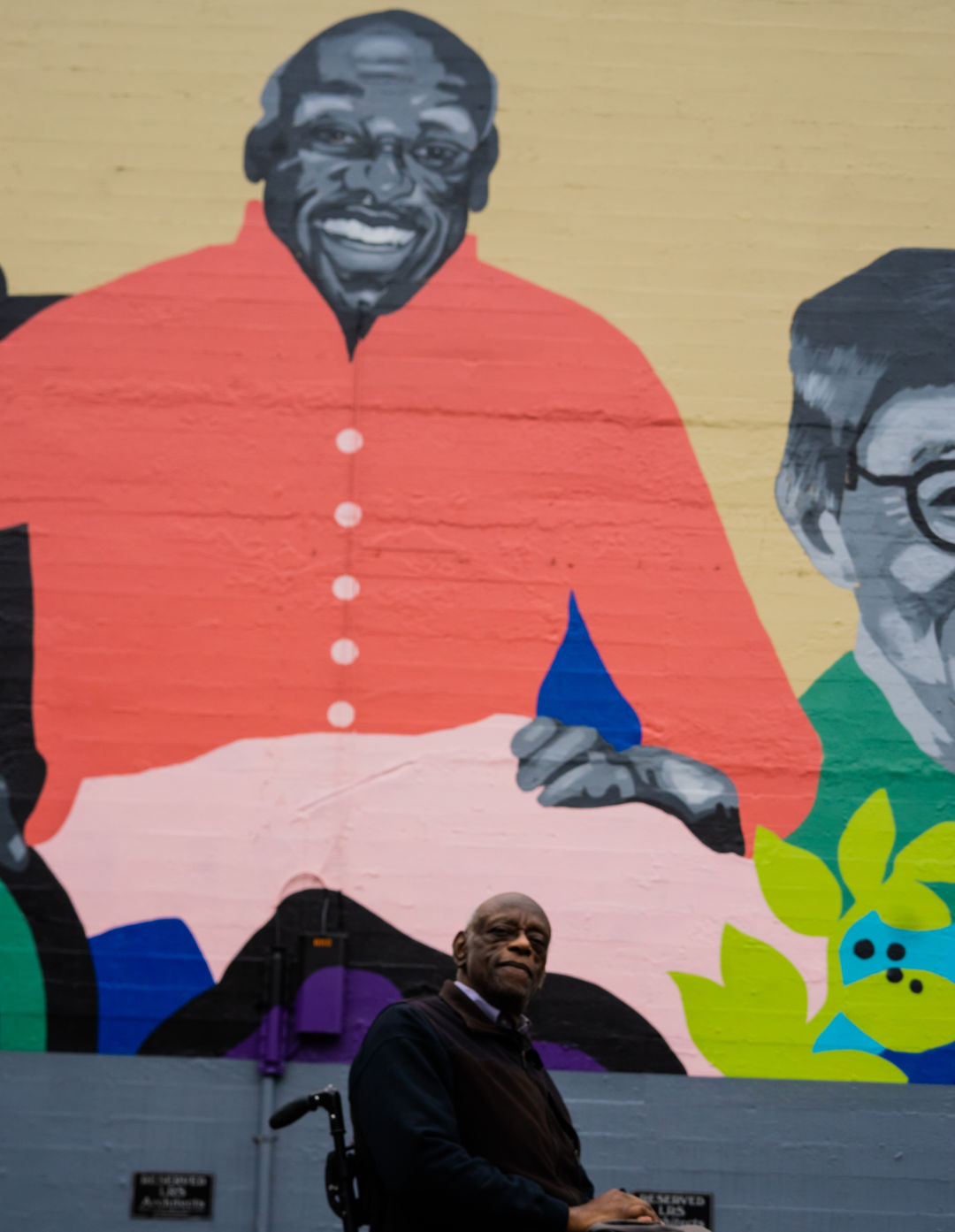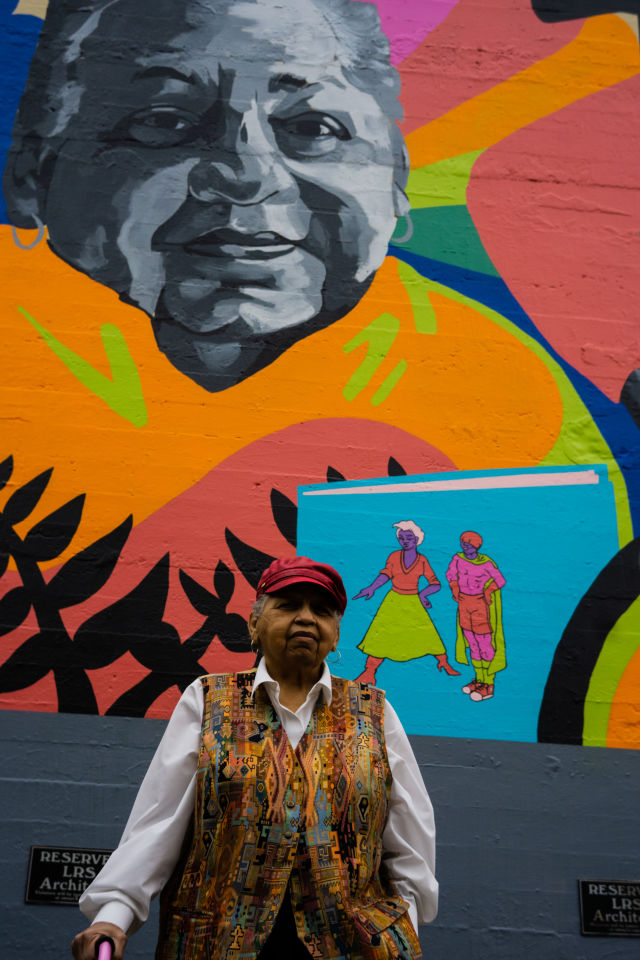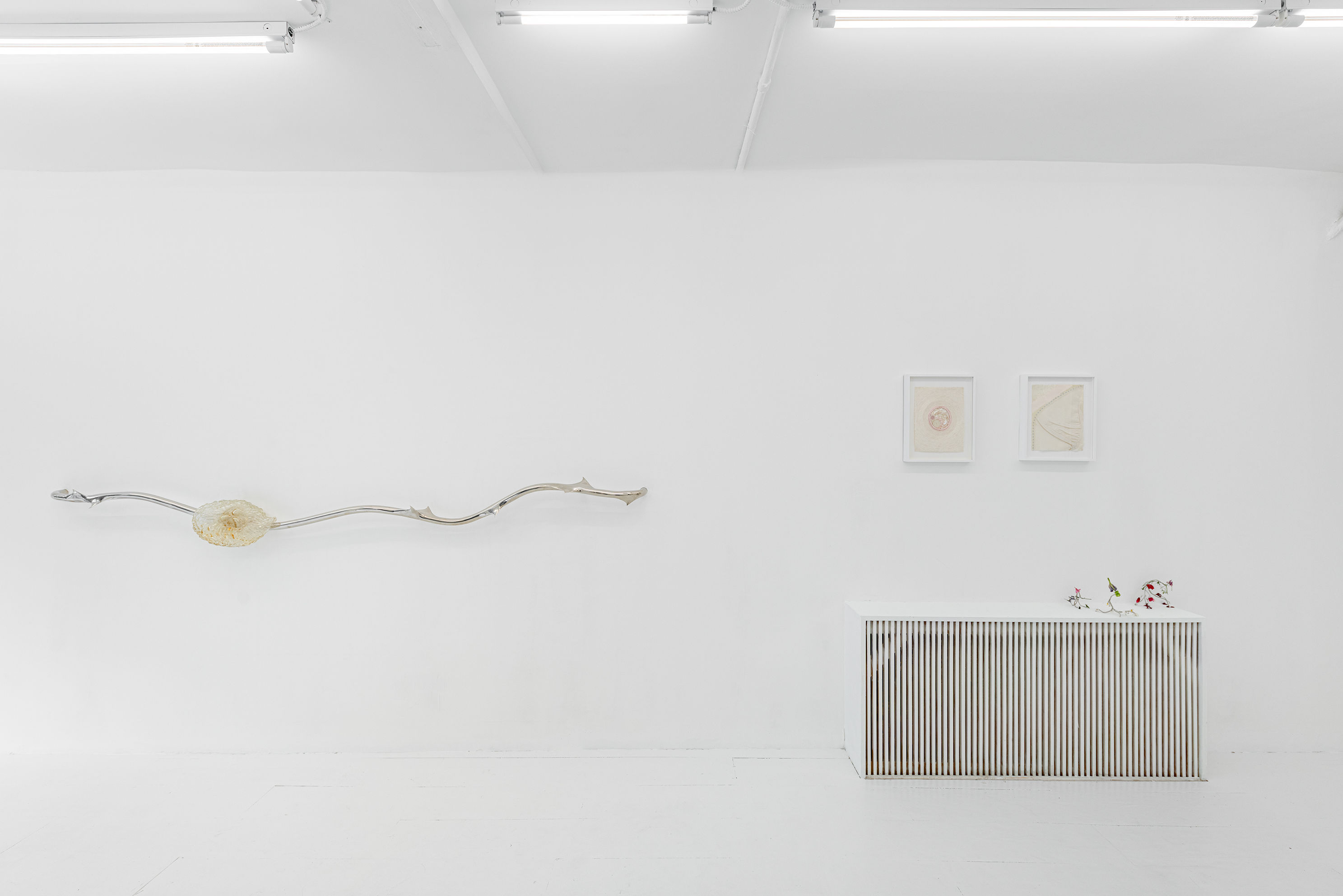A New Mural in Old Town Honors Portland’s Queer History

Artist and activist Rupert Kinnard in front of Never Look Away, under the likenesses of two characters he created
Image: Mika Martinez
Portlanders walking in Old Town will now be greeted by a vibrant mural featuring eight figures important to the city’s LGBTQ+ community.
The title of the piece is Never Look Away, and it’s located on the side of a building that looks over what used to be Embers Avenue, a beloved gay bar that was open for nearly 50 years before it shuttered in 2017. Its bright colors take up the entire side of the three-story building and stretch a whole block, demanding attention from passersby and making it hard, indeed, to look away.
Figures in the piece include national figures like Marsha P. Johnson and Angelica Ross, and local figures like cartoonist Rupert Kinnard who created the first recurring Black and LGBTQ+ comic book characters, and Lynn Nakamoto, who is the first Asian-American elected to the Oregon Supreme Court and is a fierce advocate for LGBTQ+ rights in her work. Their figures are surrounded by symbols that mark their accomplishments and contributions, including 44 stars surrounding Johnson to mark the 44 transgender lives lost in 2020, and Kinnard’s legendary characters.
Five years ago, Zoe Piliafas, the project’s organizer, had a vision for constructing the mural after she completed two others: The Fiercest Athletes, which depicts female athletes including Christine Sinclair and Serena Williams across the street from Powell’s City of Book on SW 10th, and the Black United Fund Mural, which features the likes Angela Davis and Maya Angelou on the side of the Black United Fund Building in NE Portland. After doing some preliminary research on the leading queer figures in Portland, Piliafas recognized Kathleen Saadat, who helped organize Portland’s first gay rights march, in a bar.

Activist Kathleen Sadaat in front of her likeness on Never Look Away
Image: Mika Martinez
“I went up to her, I said ‘You don’t know me, but I’m going to put a mural up of you and other folks within the community,’” Piliafas recalls. Sadaat laughed and said, “I’d like to see when that happens.”
Piliafas says her motivation for installing public art throughout Portland is rooted in a questioning of who chooses who or what is canonized: “Who gets to decide, you know, what particular deeds or contributions or destinies are kept alive in public work? Most of our monuments and leaders don’t include most of us.”
To get Never Look Away off the ground, Piliafas formed a core team of producers and artists for the project in the summer of 2019, and was connected by a mutual friend with Debra Porta of Pride NW, the nonprofit that organizes Portland’s annual Pride festival.
Piliafas and Porta met over coffee with the original, informal goal of discussing the mural’s designs and figures, but after an hour or two of conversation, Porta realized the project was exactly up Pride NW's alley. Porta told Piliafas Pride NW would be interested in funding the mural, and as the project progressed, Porta took on a more prominent role in its production alongside Piliafas.
Once the project was finalized and funding from Pride NW secured, Piliafas and her crew assembled a team to do the actual painting. This decision wasn’t taken lightly, as Piliafas wanted to feature female and queer-identifying artists. She landed on a group that included artist Cassandra Swan, experienced muralist Rachel Oleson, portrait artist Kyra Watkins, and two assistants: Naomi Likayi and Tommiemc Davis (Nafsi).
Although the mural has now been introduced to the public—five people from the mural attended an official ribbon-cutting ceremony on August 20; Sadaat and Kinnard cut the ribbon—Piliafas and Porta say their work isn’t done. They're now moving on to projects focused on educating Portland about the history, struggles, and future of its LGBTQ+ community.
Porta says the goal is to create “a whole lot of education opportunities to bring the history and the people of our community to the forefront … to really help people learn about who we are, and where we come from, and the contributions that we made.” Plans include the creation of comic books or graphic novels to be included in specific history lessons, as well as partnerships with other community groups to disseminate information.




